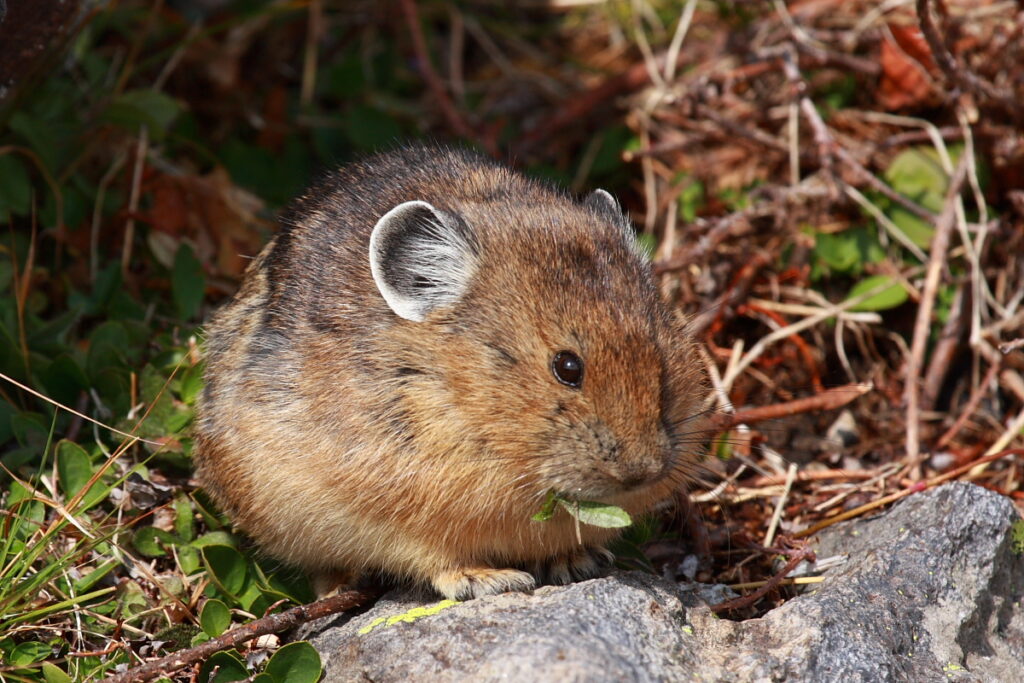As the snow begins to fall, one gets a sense that the animals are beginning to settle underground. Not so for the American pika (Ochotona princeps), smallest member of the rabbit family. They continue their search for plants, pile their cuttings, and wait for the snow to settle. And as we, the research technicians of the Conservation Research Center, hiked through sun and rain, and woke to frost on our tent, we still encountered the “eep” of the mighty pika, even in mid-October. They do not hibernate and it is believed they are diurnal, throughout the entire year.
We have witnessed interesting and humorous habits: pikas, only six inches long, carrying stems and leaves that are easily twice their size. We have stood atop large boulders, listening for calls, only to hear a muffled “eep” from several feet below the rock. They are quick to watch us, and quick to disappear.
Our team began occupancy surveys back in July, with the help of a research grant from 1% for the Tetons. Surveys include listening for and observing pikas, identifying vegetation types, and documenting the habitat characteristics throughout the Bridger-Teton National Forest. As the concern for climate change increases, pikas may serve as an excellent indicator species of change: they are temperature sensitive creatures. It has been found that the pikas’ territories have shifted to higher, cooler elevations in the past several years, through studies conducted in Yosemite and the Sierra Nevada Mountains. Understanding pika habitat characteristics will help us better predict their response to modeled climate change.
Stalking the pika has been a wonderful and challenging project. It has allowed us to work in some of the most beautiful places surrounding Jackson. The destinations were often tricky – clambering up scree fields, crossing rivers, and hanging many a bear bag. But it is rewarding, when on a cool, sunny morning, atop a rock, you listen in silence and suddenly to hear the amusing yet determined “eep” of the pika.


